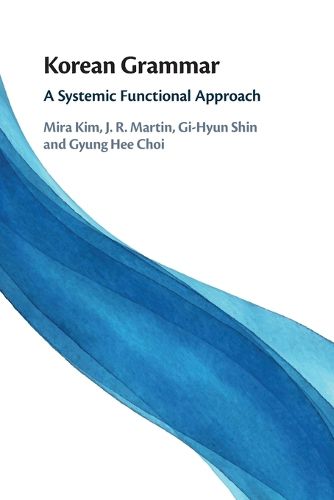Readings Newsletter
Become a Readings Member to make your shopping experience even easier.
Sign in or sign up for free!
You’re not far away from qualifying for FREE standard shipping within Australia
You’ve qualified for FREE standard shipping within Australia
The cart is loading…






Using the framework of Systemic Functional Linguistics (SFL), this pioneering book provides the first comprehensive account of Korean grammar, building foundations for an engagement with Korean texts across a range of spoken and written registers and genres. It treats grammar as a meaning-making resource, comprising experiential resources for construing reality, interpersonal resources for enacting social relations, textual resources for composing coherent discourse, and logical resources for linking clauses. It deals not only with clause systems and structures but also focuses on their realisation as groups and phrases (and clause rank particles), and the realisation of these groups and phrases in words (including clitics and relevant suffixation). Its concluding chapter demonstrates how this grammar can be applied - for teaching Korean as a foreign language and for translation and interpreting studies. This book is essential reading for scholars and students of Asian languages and linguistics and functional approaches to grammar description.
$9.00 standard shipping within Australia
FREE standard shipping within Australia for orders over $100.00
Express & International shipping calculated at checkout
Using the framework of Systemic Functional Linguistics (SFL), this pioneering book provides the first comprehensive account of Korean grammar, building foundations for an engagement with Korean texts across a range of spoken and written registers and genres. It treats grammar as a meaning-making resource, comprising experiential resources for construing reality, interpersonal resources for enacting social relations, textual resources for composing coherent discourse, and logical resources for linking clauses. It deals not only with clause systems and structures but also focuses on their realisation as groups and phrases (and clause rank particles), and the realisation of these groups and phrases in words (including clitics and relevant suffixation). Its concluding chapter demonstrates how this grammar can be applied - for teaching Korean as a foreign language and for translation and interpreting studies. This book is essential reading for scholars and students of Asian languages and linguistics and functional approaches to grammar description.